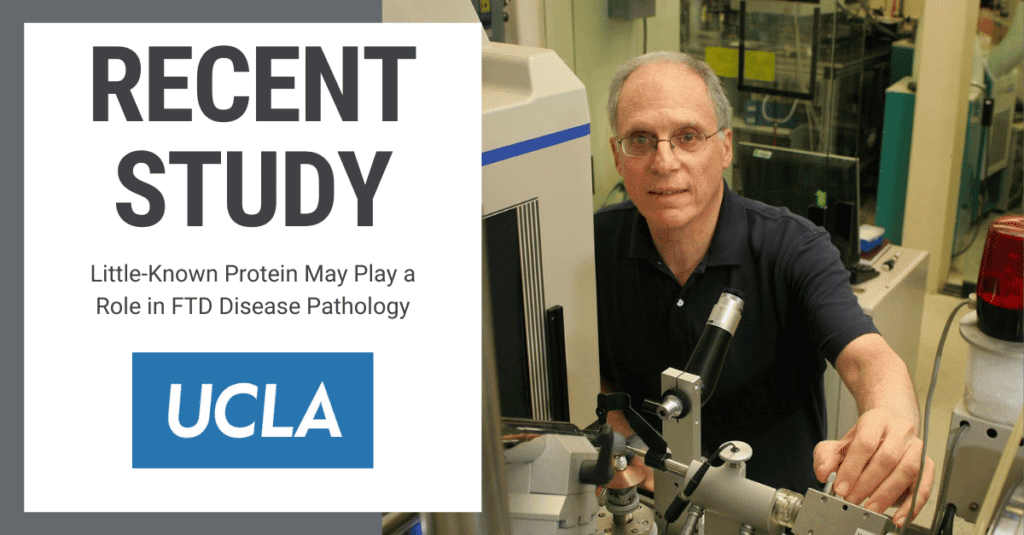Lidt kendt protein kan spille en rolle i FTD-sygdomspatologi, foreslår undersøgelse

Researchers at the University of California, Los Angeles (UCLA) are gaining new insight into how the transmembrane protein 106B, or TMEM106B, plays a role in FTD disease pathology.
In a study, published in Natur on March 28, UCLA scientists show that amyloid fibrils — potentially harmful fibrous, ropelike structures formed by closely linked protein molecules — in persons with FTD could be attributed to TMEM106B instead of the TPD-43 protein, one of the proteins in the brain commonly known to form abnormal accumulations in FTD.
“TMEM106B may be found to be a cause of [FTD]. In that case, our knowledge of the structure will aid in the design of therapeutics. Further research may also discover a connection between the actions of TMEM106B and TDP-43,” said the study’s senior author David S. Eisenberg in a pressemeddelelse. “It’s too early to tell. But at the least, the present paper will alert the community of researchers studying neurodegeneration that a new protein may potentially play a role.”
The findings provide more understanding of TMEM106B and how it contributes to neurodegeneration. Along with FTD, the protein is also known to play a role in Alzheimer’s disease and was recently found to be linked to other neurodegenerative diseases, including Lewy body dementia.
Read UCLA’s press release her.
Pictured above, left: the protein TMEM106B, with its golf-course-like fold. Right: TMEM106B proteins are layered on top of one another to form amyloid fibrils. (Credit: Yi Xiao Jiang, et al./UCLA)
Efter kategori
Vores nyhedsbreve
Hold dig informeret
Tilmeld dig nu, og hold dig opdateret med vores nyhedsbrev, begivenhedsalarmer og mere...
